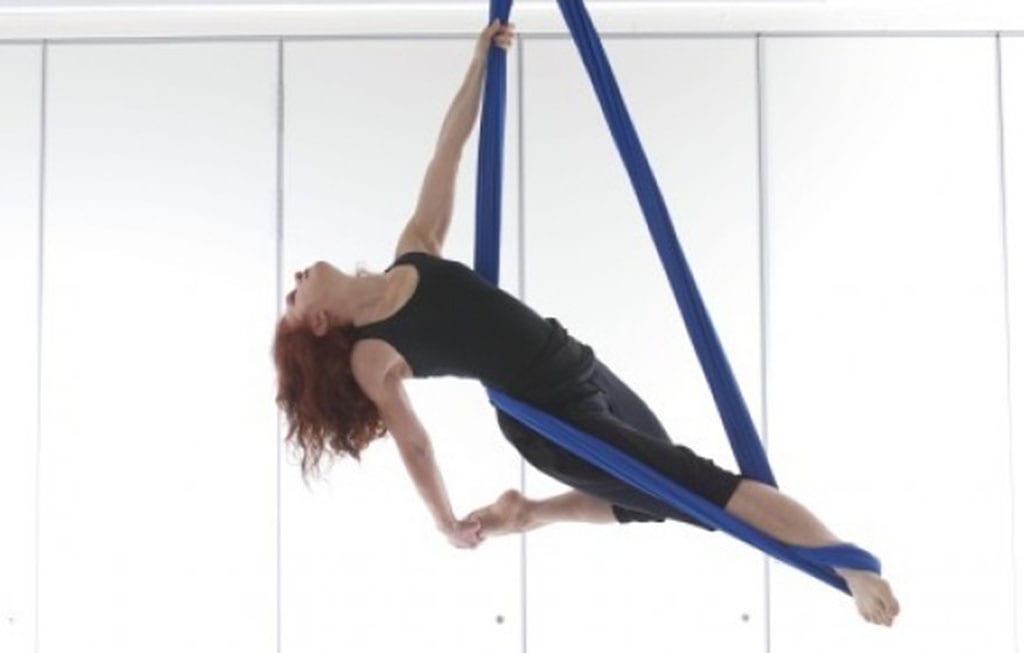A constant shift in perspective is at the core of Scarabeus’ creative work: conceptual idea, theatre space or social awareness. Its other heart beat is engagement with young people.
Depths of My Mind, part of the recent Polka’s Brain Waves Festival, is inspired by Neuro-Science and explores the experiences of four teenagers, using neuro-imaging and PBO camera work in an innovative, promenade style.
The trilogy began with Be-loved, 2014, in which two outsiders fall in love.: a take on Angela Carter’s adaptation of Beauty and the Beast, featuring Hauk Pattinson and Willow Vidal-Hall who figure in Depths of My Mind.
The third work, Exodus, will tour in 2017 – 2018 and will explore the effects of displacement on young refugees.; physical and psychological journeys from the chosen to the unwanted.
PF: It seems migration is central to your artistic ideas; would you agree?
DE: I have explored it throughout my career. I call myself the ‘lucky migrant.’ It is a life I chose. The idea of how we and places connect to the place where we are born and grew up really is important in shaping who we are. Through culture, language, we relate to the atmosphere of places with the eyes we had at the beginning. I have explored this in a political and environmental way in Arboreal, 1998, and in Landscapes of the Heart, 2002
PF: The mountains are in your blood, your DNA?
DE: I am from the mountains in Northern Italy, near Turin. We used to trek in a group. Living near them what you learn is the summit is where you have to reach. Even as a child we learnt this. We would be given sugar cubes as encouragement to keep going. It was not, and is not, an option to leave something unfinished. You have to get to the end.
Yet the landscape is constantly changing as you go around another corner; breath-taking. And when you are at the summit what you notice are the other summits all around you. I didn’t realise how this shaped me until I started to contextualise this here, in England.
PF: How would you categorise or define your work?
DE: I would define it as Aerial Dance Theatre, but circus skills is the through line. Dance, as we employ choreographers and dancers and because movement is very important to me. It is my language. And theatre, as our work stems from an improvisatory, devising process.
Yet we are constantly evolving and developing with the people we collaborate with. In the last ten years I’ve tried to let go. I’m very good at involving other people in ideas, increasingly choreographers with longevity and experience, and an interest in the social themes we want to work with.
Family is strong and gives a natural sense of belonging; collaboration is something that carries through in all our work.
PF: Is choreographer Lindsay Butcher one of those collaborators with longevity?
DE: Yes, collaboration with Lindsay began in 2002 as a performer. Scarabeus (Aerial Theatre) was commissioned by the British Council to do a site-specific work in Trinidad’s Port-of-Spain. We saw various locations and then came across Chaguaramas, American naval base. It provided the British security against the Nazi threat and an access to the South American continent. And I knew this is where I wanted to work. People thought it impossible, but this is where we did an abseiling show which later became Landscape of the Heart.
We worked with ‘vertical dance’ where a performer, attached to a harness, works with vertical surfaces. Lindsay was brought in to smooth out the choreography. We have remained friends and collaborators ever since.
PF: The striking movement seen under transparent plexiglass in Depths of the Mind, was this choreographed by LB or improvised by the dancer?
DE: Half and half: Rachel (Rachel Brennan) took over from ‘Gaby’ the original creator. In the R & D (Research and Development) phase of the work Gaby brought a great sensuality to the piece, a private moment where a girl dances in the privacy of her own bedroom, aware of her sexuality and her readiness to explore this. Rachel’s movements, on the other hand, folding and re-moulding a sheet, suggested something different, more urgent. The beauty is that an audience is free to read all sorts of things into what they see.
PF: You have been working since 1988, and as with those mountains, you prepare to climb to the top, make your way down and then go back up again?
DE: Yes, in Scarabeus we work when we have the urge to say something we really want to communicate. We are not like companies who produce one or two shows a year, mechanically. This way we remain fresh because we do things which are fresh.
PF: Essart feels passionately about mass migration, climate change and poverty. Working again in the realm of Neuro-Science with Mina Fazel, a Neuro-Science professor at Oxford University, ideas for Exodus coalesce around a young woman – ‘instability’ ‘home’ ‘objects’ ‘rituals’ – already there is a sense of creative space, ’a square’ ‘a divide.’
Fazel’s team have developed ‘narrative exposure therapy,’ working with displaced people who have experienced multiple episodes of violence.
Scarabeus will tour Exodus to outdoor arts venues using the flexible, metaphorical plexiglass platforms seen in Depths of My Mind; squaring circles and divides.
‘From liminality to assimilation, acceptance is the final word,’ says Essart.
Fortune showered sugar on this lucky migrant, for Daniela Essart’s passion and drive for artistic, social truth stretches back to those Northern Italian territories. On reaching summits she sees all those other possibilities. What an exhilarating future for Outdoor Arts, arriving in capitals all over the world.

